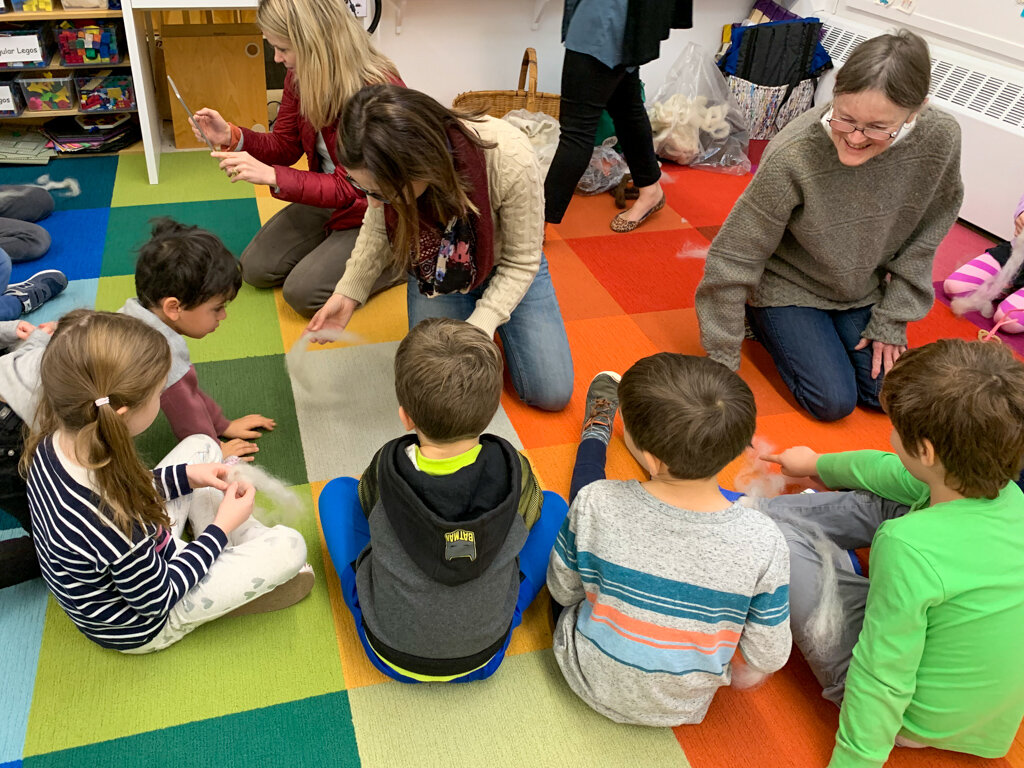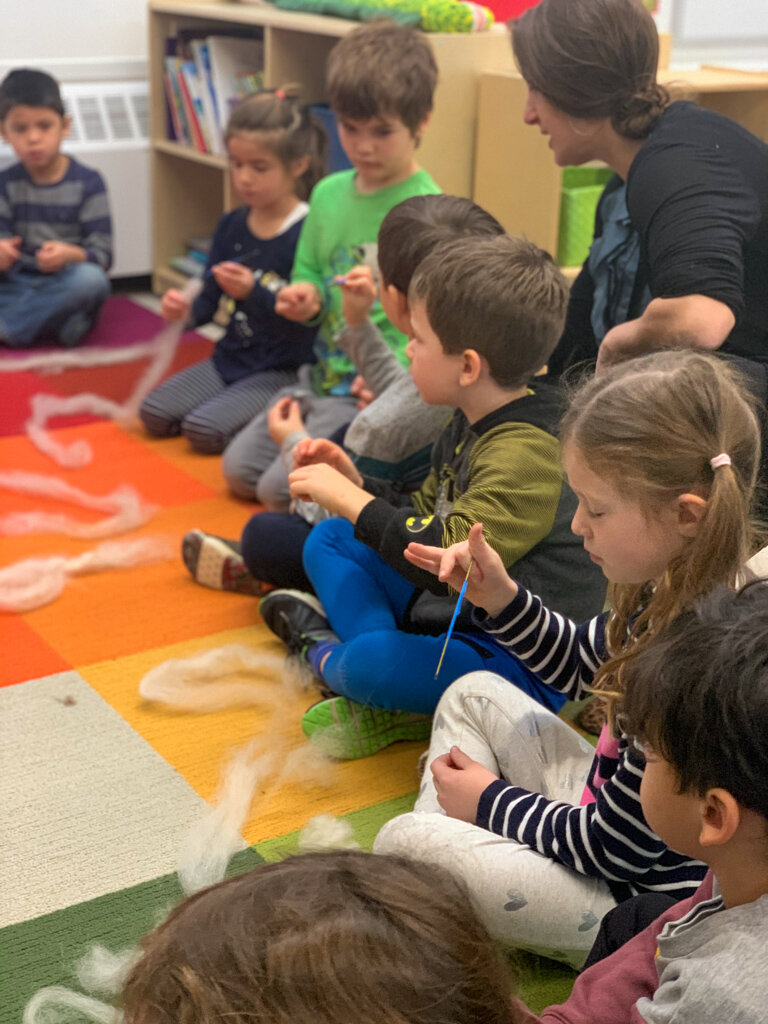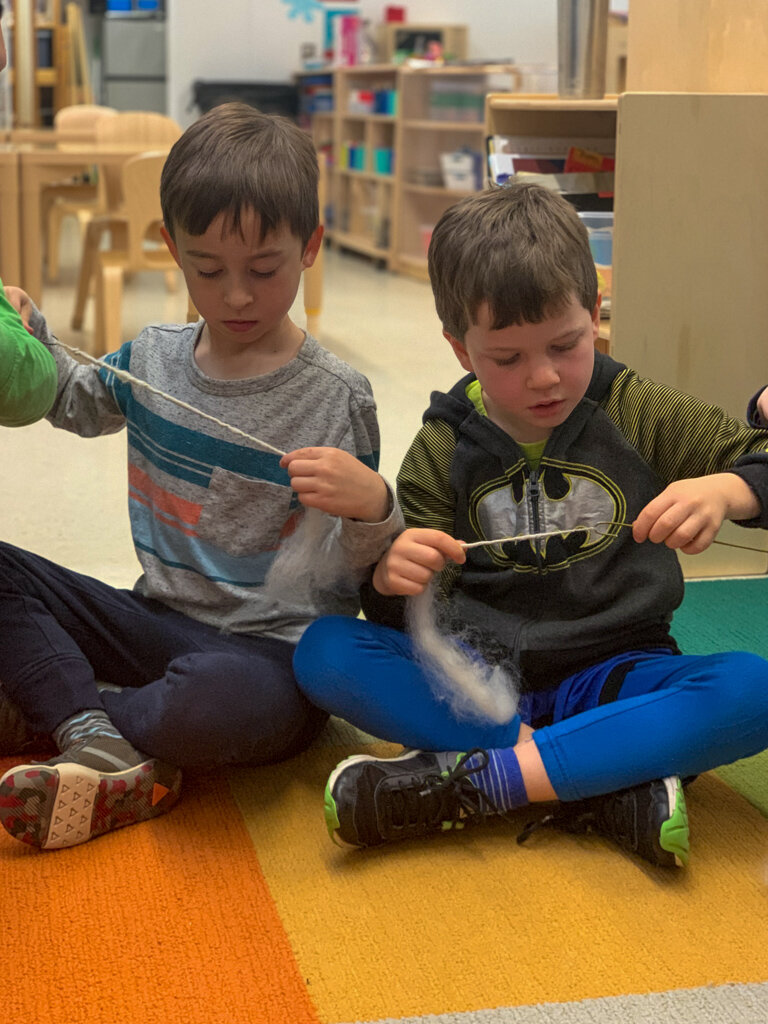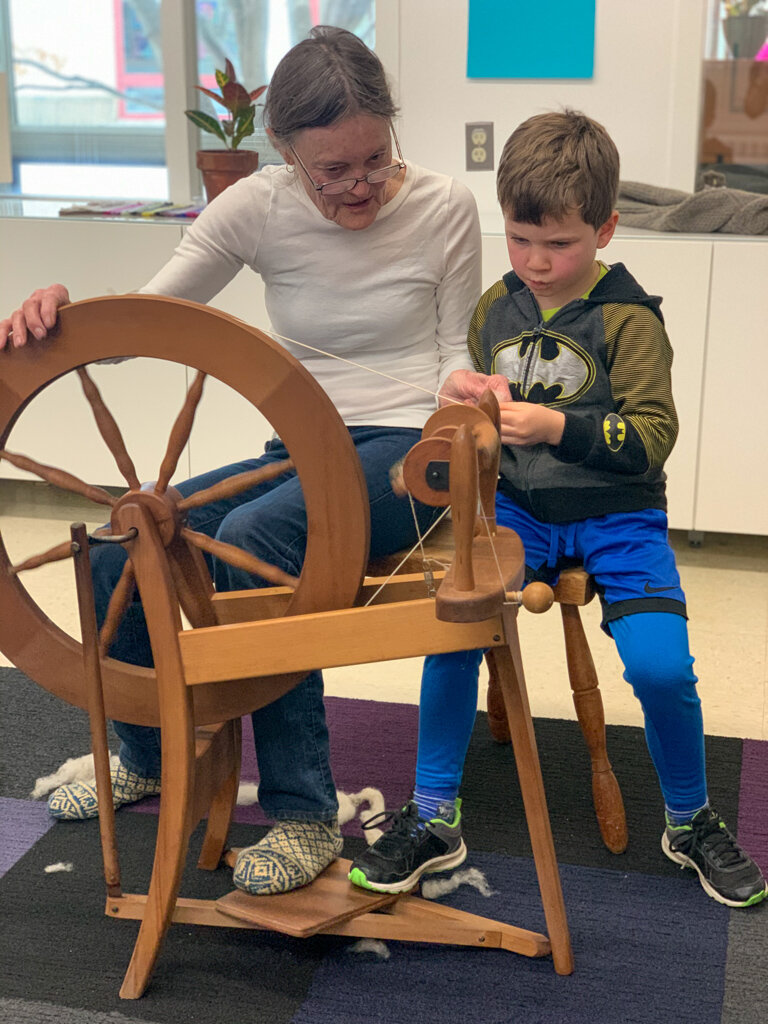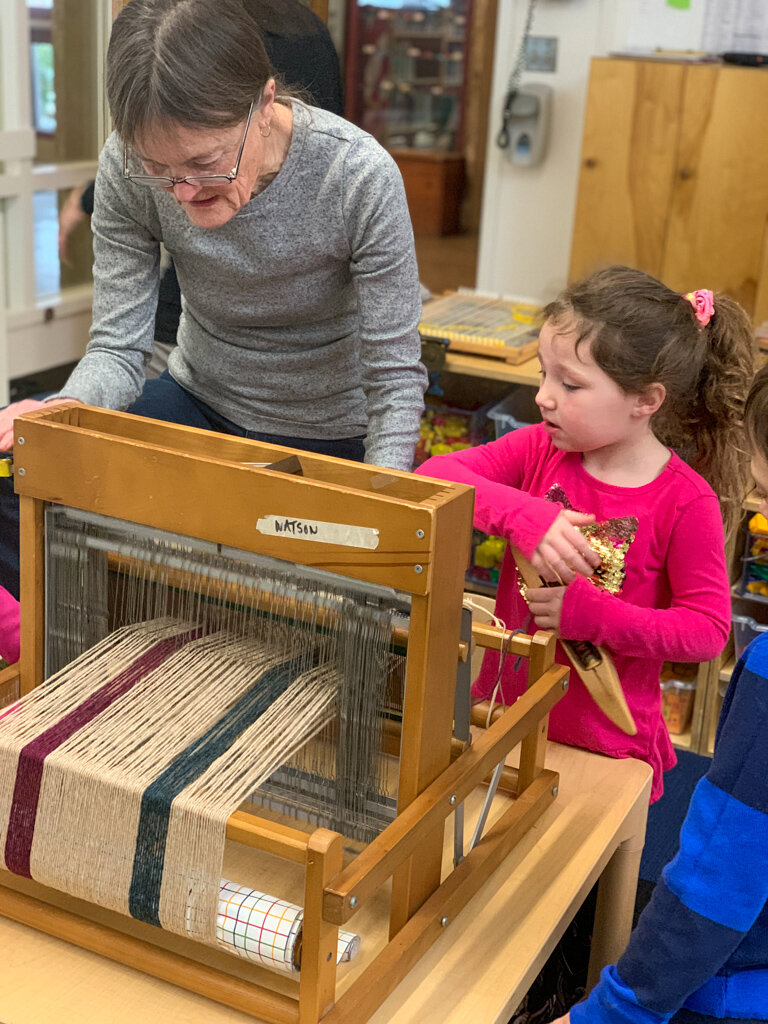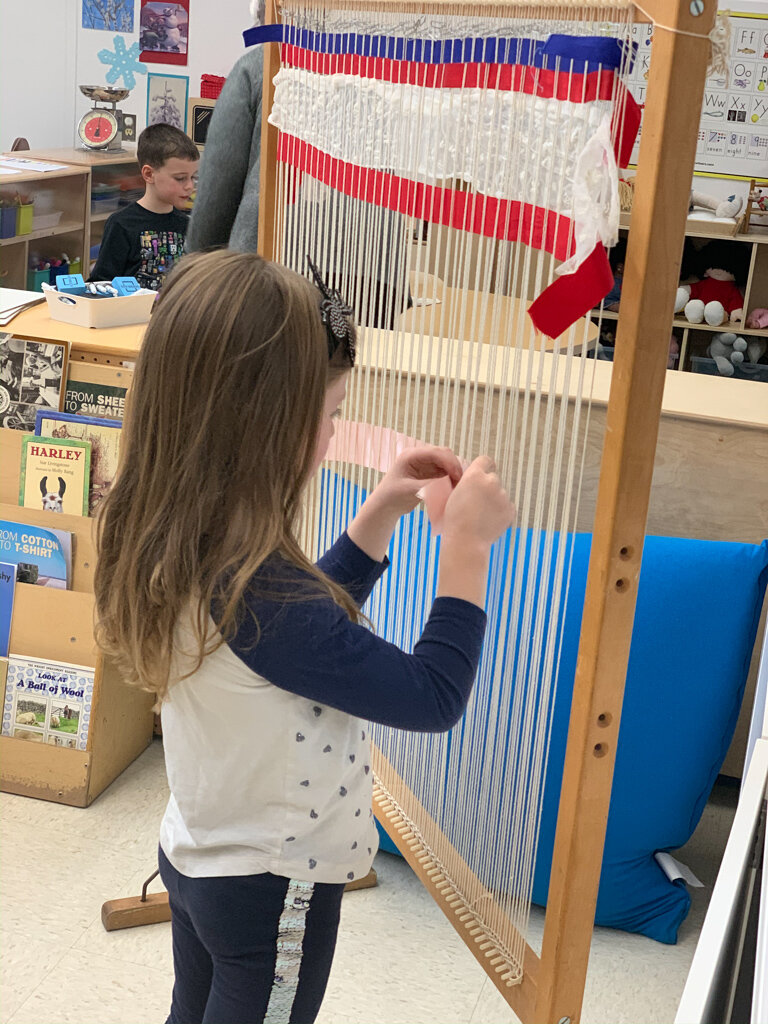Engaging a Natural Desire to Make Sense of The World
Exploring The World Around Us in Kindergarten at GUS
Kindergarteners are full of possibility, energy, curiosity, and a desire to know about their world and how it works. Our kindergarten theme, The World Around Us, allows us the opportunity to explore the basic human needs of food, clothing, and shelter in our lives, historically and in other cultures. Providing children with information about the hidden processes that are involved in bringing these necessities to their family and others around the world helps them to feel knowledgeable about some of the mysteries of the adult world. Students have multiple opportunities to engage in practical projects around these themes, such as cooking, sewing, and carpentry. Theme based projects help students synthesize and integrate their math and literacy skills. There is something deeply satisfying about these projects in that they are real work with outcomes that show children their own competence.
Throughout the year, we explore our theme in a variety of ways. In the fall we explore local foods, staple foods, and traditional foods. We begin our food study learning about wheat. The children use kernels they separated from wheat stalks to grind into flour. They then use the flour to make bread and pancakes. We compare the taste of these wheat items with cornbread and cornmeal pancakes as we expand our grain study to include corn. Then it’s on to apples and other locally grown foods. It’s a delicious way to start the year! During the end of the fall and into the winter term, we explore clothing. We draw, design and discuss favorite clothing, clothing that has different uses, and how climate affects clothing choices. We introduce weaving, knitting, and sewing as techniques for making clothing. The children learn about the sewing machine and its different parts. Each child has a turn to sew several items on the machine, including their own winter hat and a gift for parents. In the spring, we dive into learning about shelters of all types. This study culminates in our construction of a model doll-sized house from the foundation up.
In the last few weeks, we have done a study of fabrics, currently focusing on wool. We have done several lessons on different animals' hair and wool as well as fibers like cotton and silk. Spinner and weaver Debbie Watson joined us last week, with cards and combs, spindles, and a spinning wheel, to teach the children about spinning wool and weaving. She showed the children examples of different fibers and their origins. The children carded wool, spun wool on their own spindles and even got to operate the spinning wheel. In other sessions, they made paper weavings, wove a belt on a belt loom, completed a sampler on a table loom, and created a ribbon tapestry on our standing tapestry loom. The weaving process helps children cooperate and use their fine motor and sequencing skills. The children are learning many new words related to wool and its uses that we continue to incorporate into stories and charts.
In kindergarten, we engage our students’ natural desire to make sense of the world, help them gain confidence in themselves as competent learners, provide them with ample opportunities for creative self-expression, and help them begin to understand how they think and learn.
We work to have each child be recognized as a valued group member, while taking a role in supporting others in their kindergarten community. We take the long view, thinking about who we hope these students will be later in life. We want to produce graduates who are competent, skilled, generous, thoughtful, engaged people who have integrity, people who continue to learn and grow.


